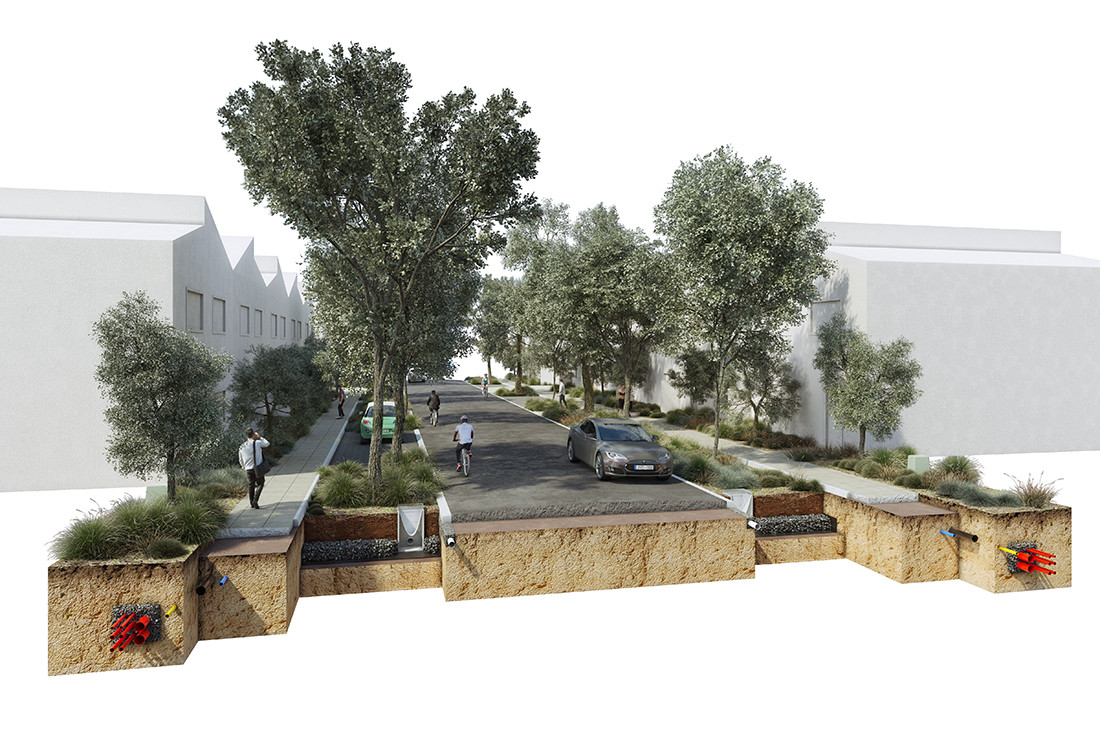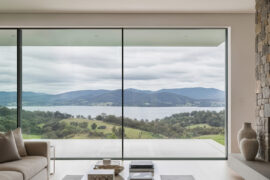In cahoots with Bligh Tanner and Sydney Water, Architectus has explored urban typologies and stormwater management, with a look to shape a sustainable urban environment in Western Parkland City.

November 6th, 2020
Caring for the planet is ultimately caring for ourselves. With a new strategy direction from Architectus, there is a chance to embrace sustainable stormwater initiatives that will benefit Western Sydney, the landscape and the people. The hard work has been accomplished now for implementation!
Looking to the future and helping to shape a new cooler and greener Western Sydney, Architectus, collaborating with Bligh Tanner and in partnership with Sydney Water, has created an urban design solution for a more sustainable environment.
As a renowned Australian architecture and design practice, Architectus has acquired a deep understanding and a variety of perspectives through multiple projects that span the commercial, residential, education, public, transport, interior architecture, urban design and planning sectors. From this vast experience, Architectus was able to bring to the table a valuable contribution and complement the knowledge of their collaborators.

The project know as Urban Typologies and Stormwater Management, focuses on Western Sydney’s Wianamatta South Creek corridor — otherwise known as Western Parkland City — and the strategy developed places the urban microclimate at the forefront of urban planning. Re-assessing traditional ways of working, Architectus, Bligh Tanner and Sydney Water have together conceived an innovative approach to stormwater management and the challenges of urban density, urban greening and sustainable water management.
One of the significant findings of the project was that temperatures can be reduced by up to 4.6 degrees on average by creative streetscape design and stormwater capture in new developments. The proposed typologies provide an evidence-based benchmark for the delivery of best practice sustainability outcomes in Western Sydney and other growth areas over the coming decades to create better and more resilient communities.
Architectus Project Lead Oscar Stanish commented, “We’re looking at something very broad which integrates the stormwater outcomes together with the expansive issues of heat, climate and greening in Western Sydney. It’s really about making sure that we are connecting the dots between a lot of different people, in many different disciplines and that’s really, I think, at the core of what we have brought here with this project.”
Alan Hoban, Project Lead at Bligh Tanner said “This is the first time in Australia that a new city is being designed to deal with the challenges of future climates. The challenge of Western Sydney is to accommodate an additional one million people in an area that can get oppressively hot in summer, and where there are housing affordability pressures, sensitive waterways and key infrastructure constraints.”

The Report’s recommendations are designed for simple and realistic implementation by planning authorities and developers across a broad range of uses, including office, industrial and residential developments. Proposed changes include increasing canopy cover, maximising areas of irrigated vegetation and setting planning controls on the amount of water-resistant surfaces. These changes can contribute to a 75 per cent reduction in stormwater runoff compared to current standards.
Stanish added, “What I really liked about it (the project) was the opportunity to work on climate in general, trying to look at what the end outcomes are going to be for the people who live and work in Western Sydney in the future and, from a whole range of perspectives, that those things can all be delivered.”
The project included many stakeholders and added to the complexity of the research and analysis with input from the Greater Sydney Commission, Western Sydney Planning Partnership and the Department of Planning Industry and Environment to name but a few. All areas of design were integrated into the proposition and the outcomes are a genuine step forward in the quest for a more sustainable environment if and when implementation occurs.
Sydney Water Managing Director, Roch Cheroux said the report showcases the smart planning techniques that will guide development across Western Sydney and other growth communities, reducing the Urban Heat Island Effect through more effective design principles and catchment management.
“The report was commissioned to help influence the design of buildings, open spaces, streetscapes and green corridors to deliver a true Western Parkland City, in what is currently one of the hottest and driest parts of Greater Sydney.
“Furthermore, implementing cooling actions such as permeable surfaces, tree planting, vegetation and irrigation will provide welcome relief to communities in Western Sydney, with modelling showing the number of extreme, very strong and strong heat-stress days per summer, decreases dramatically from 47 to 19 days.”
There is no time to waste in embracing initiatives that can sustain both the planet and our communities. Time is of the essence and with a plan of action such as this it is possible to make a real difference and one that matters on every level.
INDESIGN is on instagram
Follow @indesignlive
A searchable and comprehensive guide for specifying leading products and their suppliers
Keep up to date with the latest and greatest from our industry BFF's!

A longstanding partnership turns a historic city into a hub for emerging talent

For Aidan Mawhinney, the secret ingredient to Living Edge’s success “comes down to people, product and place.” As the brand celebrates a significant 25-year milestone, it’s that commitment to authentic, sustainable design – and the people behind it all – that continues to anchor its legacy.

The London-based architect was recently in Australia for SyLon, an event broadcast simultaneously in Sydney and London to explore housing solutions across both cities.
The internet never sleeps! Here's the stuff you might have missed

With the 2025 INDE.Awards now over, it’s time to take a breath before it all begins again in early December. However, integral to the awards this year and every year is the jury – and what an amazing group came together in 2025.

Minimalist in form yet robust in performance, the Artisan 934 Panoramic Sliding Door reframes the function of a sliding door as a central architectural element.